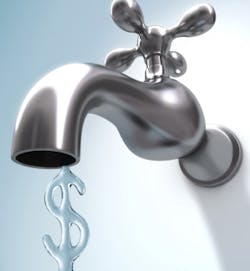Sensor Promises Dramatic Water Savings for Chip Making
Semiconductor Research Corp. (SRC, www.src.org), a university-research consortium, together with researchers from the University of Arizona and Arizona State University have shown a new, exclusive technology that is said to dramatically conserve the amount of water needed to manufacture semiconductors. Using a device called an Electro-Chemical Residue Sensor (ECRS), it allows for clean, rinse-and-dry process optimization that helps make semiconductor facilities more efficient, sustainable and cost-effective, SRC said in a March 3 press release. SRC is based in Research Triangle Park, N.C.
Water conservation in semiconductor facilities is becoming a major concern for integrated device manufacturers (IDMs), as the costs, availability and sustainability of water resources can greatly affect manufacturing facilities. Approximately 80 percent of water consumed by semiconductor sites is used in the rinsing of wafers during various stages of device fabrication. Additionally, a wafer going through a modern semiconductor process is rinsed roughly 400 times, according to industry experts.
“The use of water resources are getting increasingly more critical, especially as the industry moves to smaller features and approaches nano-scale manufacturing technologies,” said Dr. Bert Vermeire, associate professor of research at Arizona State University. “A main reason for high water usage is inadequate process monitoring, which can be attributed to the lack of appropriate monitoring tools. One cannot optimize what one cannot measure.”
One of a kind
ECRS addresses this measurement challenge by dynamically assessing a wafer’s cleanliness during the clean, rinse and dry cycles. A comprehensive simulation model estimates residual impurity concentrations from the measured results. No other sensor of this type is available today, according to SRC.
“Tests performed in collaboration with an IDM’s large integrated circuit manufacturing facility demonstrated this sensor’s capability to detect chemicals inside features, showing annual water savings of up to 50 percent could be realized by optimizing the rinse process using the ECRS,” said Dan Herr, SRC director of Nanomanufacturing Sciences.

